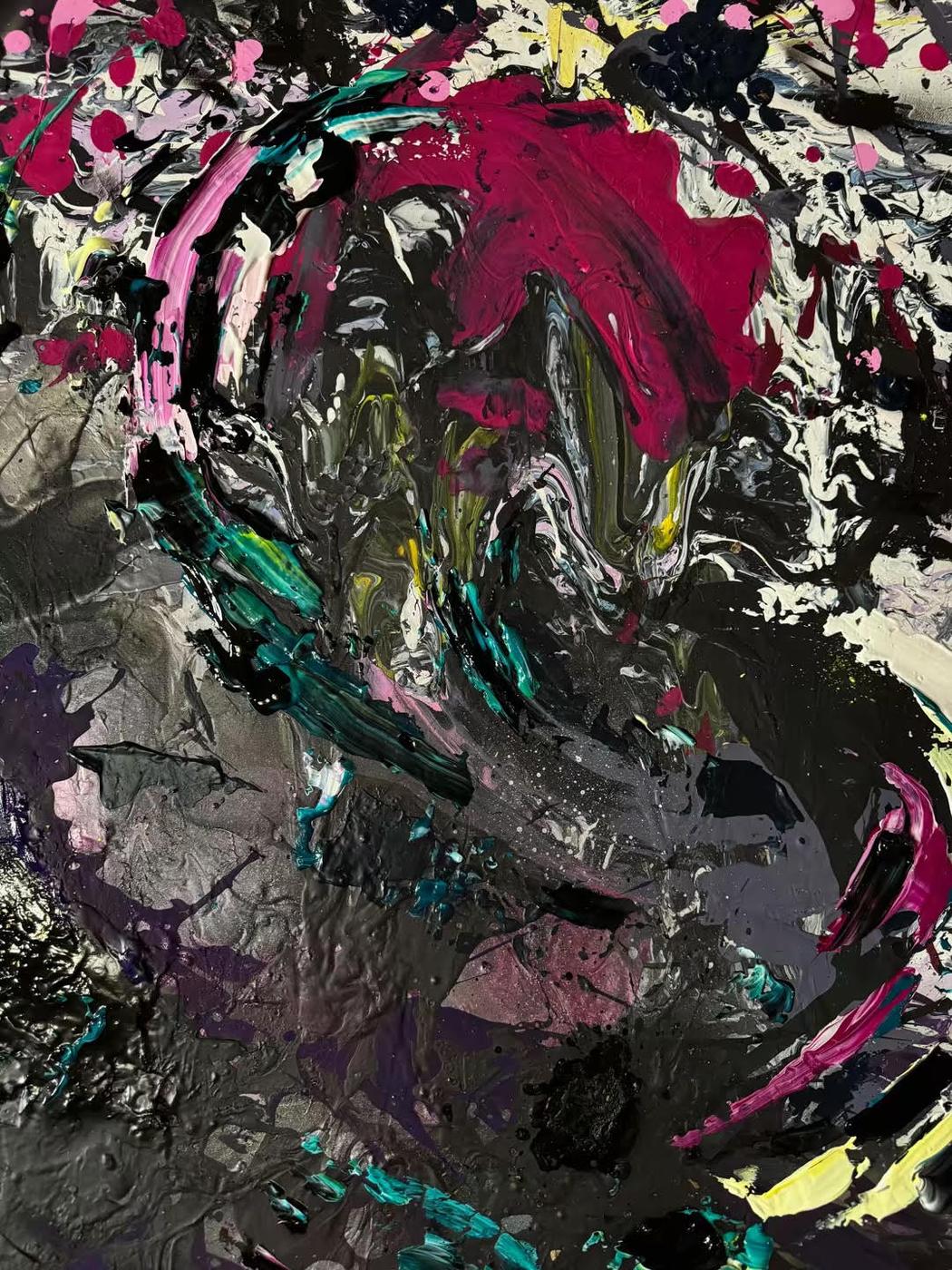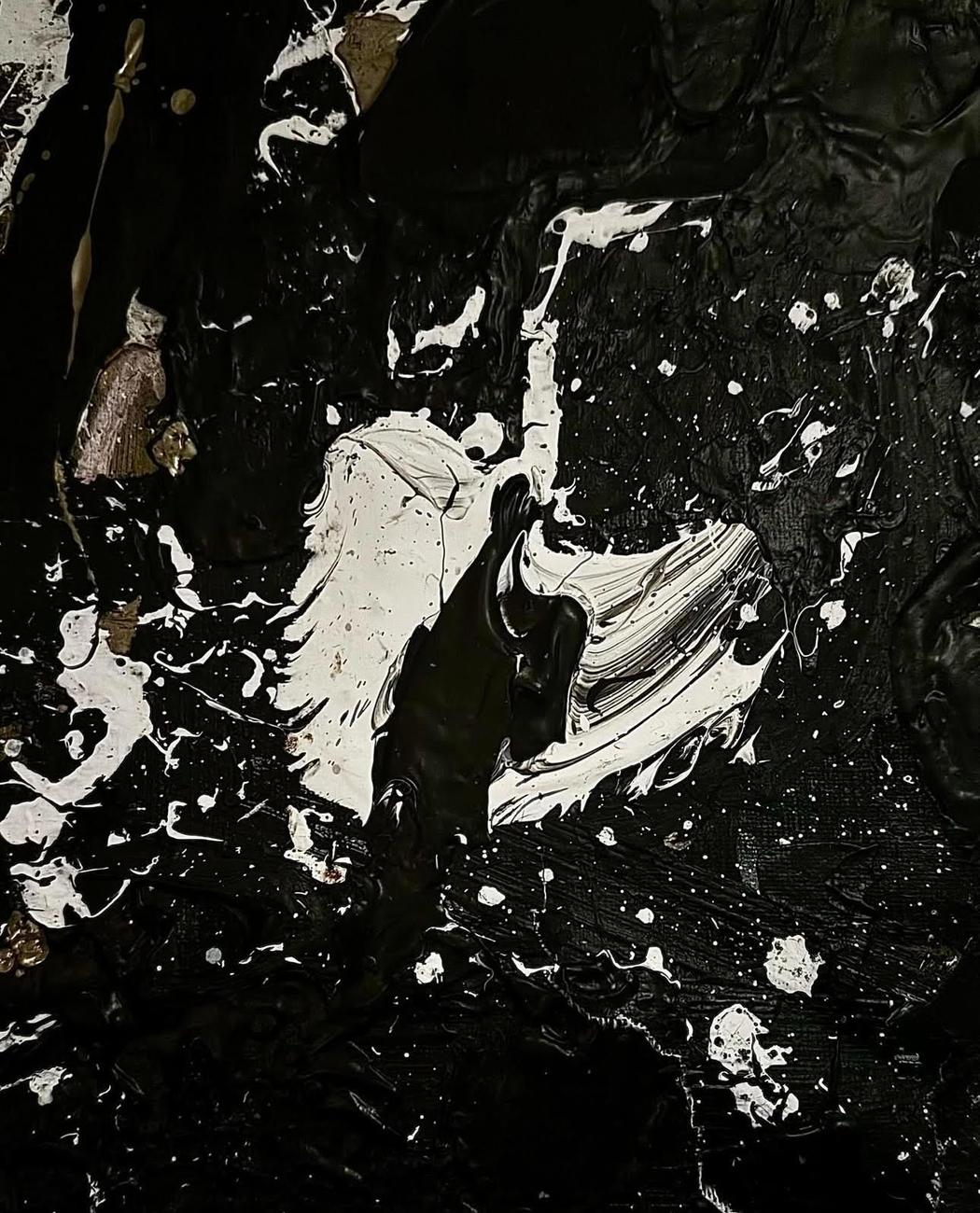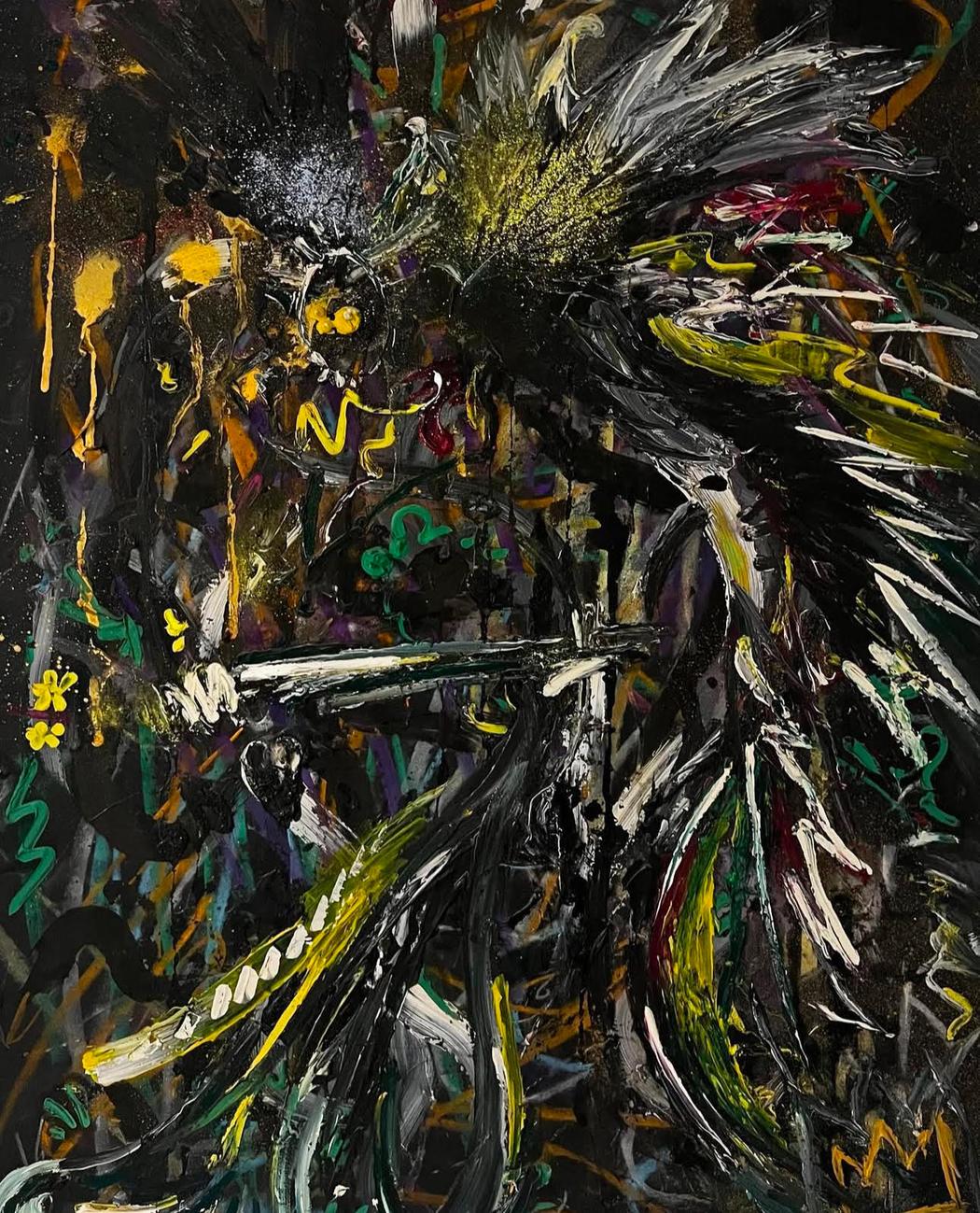Lucky Foster
Where do you live: England, UK
Your education: Self-taught
Describe your art in three words: Intuitive · Evocative · Authentic
Your discipline: Contemporary abstract expressionism
Your artist statement mentions working between instinct and intention. How do you find the balance between those two forces when painting?
It’s more of a dance than a balance, I dance between the two rather than finding the perfect equilibrium. Both guide each other, almost like a waltz.
You describe your creative process as “praying in color.” Could you tell us more about the spiritual or emotional dimension behind your work?
I consider each of my pieces to be a contribution, new existence within existence itself. I channel into a space/state that makes me work almost automatically allowing the way to guide the way. Also known as the Dao in Taoist teachings, which is said if were to ever be perfectly explained would cease to exist. It’s this I’ve learnt to access and translate, a sacred fragment of the universe, which allows me to speak fluently in colour. I translate emotions that don’t yet have names, emotions we haven’t even fully defined. It’s not uncommon for me to cry while I paint. After outbursts where I’ve thrown and slashed paint at the canvas I apologise to my creation by apologising gently through the brush. If I were to alter this process my work couldn’t be complete or honest. I am not a painter, I am merely a translator.
 Lucky Foster | Spit | 2025
Lucky Foster | Spit | 2025
Many of your pieces feel like they capture a moment of transformation or release. What role does emotion or catharsis play in your process?
Emotion and catharsis are central to my work. I almost always feel everything at once or almost nothing at all, each piece is the end of an emotional cycle and the start of another. Each piece is a form of release. It’s not a hobby or a choice, it’s something I have to do. Without it I would drown in the height of my emotions.
 Lucky Foster | Redemption | 2023
Lucky Foster | Redemption | 2023
Do you usually begin with a specific concept in mind, or do your paintings evolve spontaneously as you work?
I start with a feeling with determines the entire piece. I begin with creating the environment for whatever will later inhabit it. Varying everytime I work, and I truly believe the outcome couldn’t exist without its habitat. There can be many layers before the piece is ready for its home. For example although redemption is black and white its environment was dark greys, darks yellows and even darker greens, which set the direction for everything that followed. Each movement provides a guideline for the next until the piece eventually completes itself. It’s a process of acknowledgement. Acknowledging the form as it emerges letting the acknowledgement of the initial feeling shape the entire journey.
Your palette often moves between darkness and light — deep blacks, metallics, and luminous tones. What guides your color choices?
My choices are guided by my immediate emotions at the time, I consider my work to be very honest. So my colour choices are very literal, darker tones are a direct translation of darker emotions i.e grief, sadness even anger and regret. I paint in darker colours because I don’t use the colour red. I’ve never used it and don’t see a day I ever will. If I have the luxury, I generally buy a range of acrylics in different colours and sizes based on my current state of mind, a selection of oil paints and sometimes spray paints combined with whatever materials I have left over from previous works. I balance the initial habitat by detailing in oils to create the environment. I then continue balancing intentionally acknowledging forms that start to form eventually allowing the piece to complete itself.
 Lucky Foster | Paradise Circus | 2019
Lucky Foster | Paradise Circus | 2019
Texture and movement are central in your paintings. What materials or techniques do you use to create such depth and energy?
I paint on the floor, I’ve been told it’s action painting, but I’m more deliberate than that. Moving around the canvas as I work. Sometimes even obliviously working upside down, unaware until I analyse the finished result which announces itself once I see it at the end. There are definitely elements of raw intuitive movement, but in contrast there’s also intention, kindness and acknowledgement to my pieces too. I know when to explode in colour, but also when to be gentle and deliberate. And most importantly, I know when to stop.
 Lucky Foster | Neptune’S Prayer
Lucky Foster | Neptune’S Prayer
In your opinion, is abstraction a language of its own — something that can express what words cannot?
Absolutely, I believe abstraction is a language of its own, and can express what words simply cannot. In English we lack the vocabulary for so much of what we feel and experience. It’s like we only have a fraction of the words to describe how we are and what’s going on. Abstraction gives us a tangible visual language to express those things we feel but cannot articulate. That’s the beauty of abstraction. It gives life to emotions or feelings that would otherwise leave us feeling suffocated. Abstraction gives the unspoken parts of us a voice, a voice that’s universally understood.


Leave a Reply